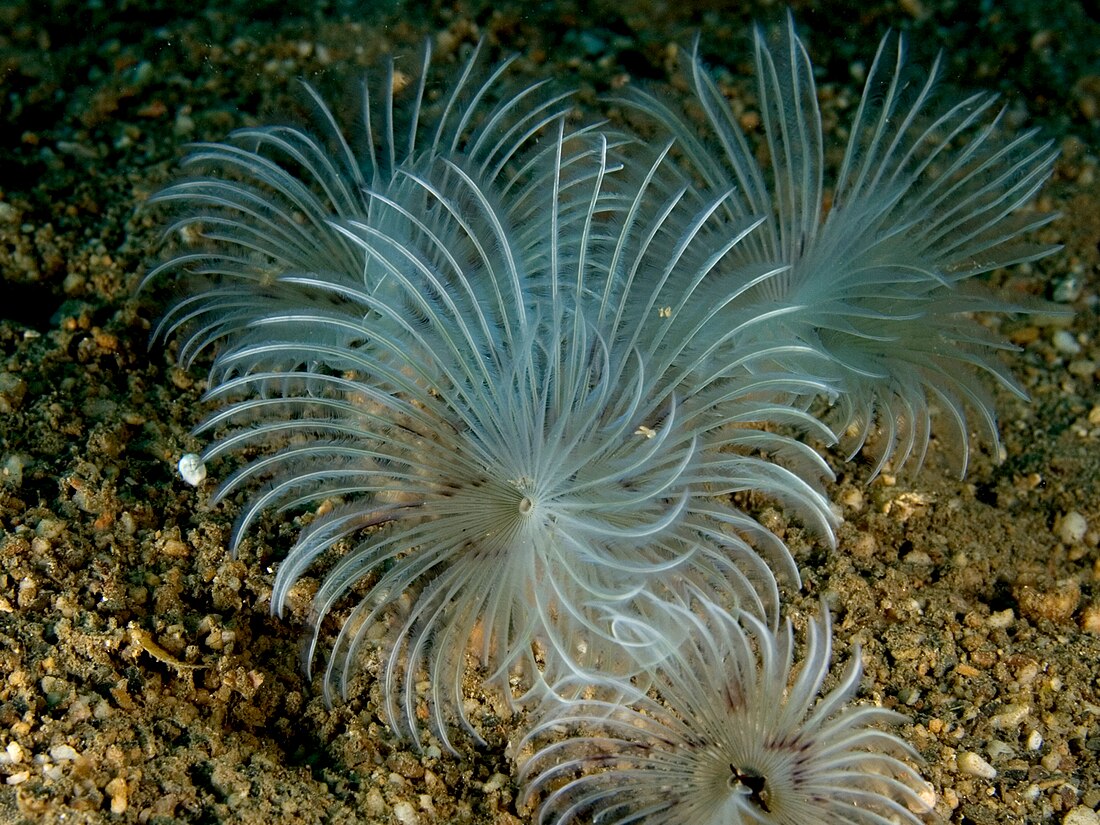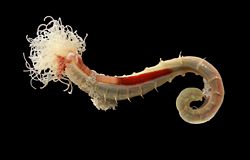Top Qs
Timeline
Chat
Perspective
Sedentaria
Group of segmented worms From Wikipedia, the free encyclopedia
Remove ads
Sedentaria is a diverse clade of annelid worms. It is traditionally treated as a subclass of the paraphyletic class Polychaeta, but it is also a monophyletic group uniting several polychaetes and the monophyletic class Clitellata. It is the sister group of Errantia.[1]
Sedentaria are mainly found within marine environments that have low oxygen levels and are specially adapted to these low oxygen environments by increasing gill surface area and having high-affinity respiratory proteins. Furthermore, they go through a process of metabolic depression which lowers their energy use so that they can inhibit these low oxygen zones .[2]
Remove ads
Phylogeny
The phylogeny of polychaetes is slowly being resolved. Sedentaria and Errantia are the two biggest clades of polychaetes, and together they compose clade Pleistoannelida. Sedentaria's most basal clade is Orbiniida.[3] Other groups that are nested within Sedentaria are: Clitellata, the Sabellida/Spionida clade, Opheliida, Echiura, Cirratuliformia, Terebelliformia, Maldanomorpha and the families Siboglinidae and Capitellidae.[4][1][5]
| Pleistoannelida |
| ||||||
Some taxa, such as Spintheridae and Myzostomida, are still difficult to place due to their long branching, but they likely belong to either Errantia or Sedentaria.[1]
Remove ads
References
Wikiwand - on
Seamless Wikipedia browsing. On steroids.
Remove ads






